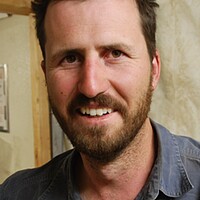Syria: Damaged landmarks await peace, restoration
| Aleppo, Syria
Omar Islam has undertaken a Sisyphean task. In the midst of Syria's civil war, this former archaeology student with a master's degree in restoration work is dodging sniper fire, artillery, and airstrikes to catalog the destruction of Aleppo's historical landmarks.
Today's battlefield was once a major tourist attraction. Aleppo's Old City is one of six places in Syria classified by UNESCO as a world heritage site and is one of the country's main attractions.
The recent loss of the minaret on the famous Umayyad Mosque brought the threats facing historical landmarks here to outsiders' attention. The 11th-century mosque, however, is just one in a long list of ancient monuments damaged by the fighting – a list that includes two ancient markets, a library, several mosques, and historical bathhouses.
Activists have now collected photos and videos of the mosque, still very near the front line. Piles of rubble fill the mosque's courtyard, once known for its elaborate stonework. The five-level minaret, considered by many Islamic scholars to be among the most distinctive in the region, collapsed into a pile of stones indistinguishable from countless destroyed buildings. The destruction is a blow to Syria's heritage and possibly to the postwar economy if it deters tourists, who accounted for 12 percent of the city's prewar economy.
"At this point, we can fix the damage and return the monuments to as they were before, but if the fighting continues like this we may lose some of these monuments forever," warns Mr. Islam, director of the Heritage Office at the Aleppo Administrative Council.
Between 30 and 40 percent of the city's ancient landmarks have been damaged or destroyed since 2012. Heavy fighting prevents Islam and his colleagues from assessing several important sites.
"People working with these places and ancient things think that these ancient things have a spirit and a soul. Losing them is like losing a person," Islam says.
Those working to protect the sites say they hope some of the damage can be undone.
"Not all the damage is as bad as you'd imagine," says Abu Mahmoud, director of the Syrian Association for Preserving Heritage and Ancient Landmarks. "Even if the minaret [of the Umayyad Mosque] was destroyed, we are trying to save the stones so we can rebuild it the same as it was before."
Islam's group receives little outside support. Islam says he would like to reach out to UNESCO for help, but he doesn't have the slightest idea how to contact them.







